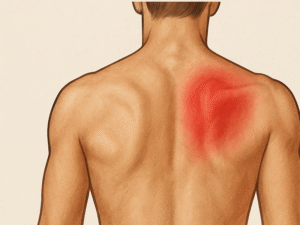Chronic Anterior Talofibular Ligament Tear Treatment
An ankle sprain is a common injury that occurs when the ligaments of the ankle are stretched or torn, usually due to a sudden twisting of the ankle, rolling, or direct impact. This injury most often affects the anterior talofibular ligament (ATFL), one of the primary stabilizers on the lateral side of the ankle.
Table of Contents
Ankle Pain
Are you struggling with repeated ankle sprains, pain on the outside of your ankle, or instability when walking or running? You might be dealing with a chronic anterior talofibular ligament (ATFL) tear, a condition that affects the ligament complex stabilizing the ankle joint.
What Is a Chronic Anterior Talofibular Ligament (ATFL) Tear?
A chronic ATFL tear is a long-term injury to the anterior talofibular ligament, one of the most commonly injured ligaments of the ankle. It connects the talus (ankle bone) to the fibula and is part of the lateral ankle ligament structure.
This ligament plays a vital role in keeping the ankle and foot stable, especially during twisting the ankle, quick turns, or sports activity. When damaged and not properly treated, the ankle may become unstable, causing long-term discomfort and recurrent ankle sprains.
Causes and Symptoms of Chronic ATFL Injury
A chronic ATFL ligament tear is often caused by:
Repeated or untreated lateral ankle sprains
Inadequate rehabilitation after an injury
High-impact sports or sudden movements
Common Symptoms Include:
Pain on the lateral side of the ankle
Feeling of weakness or instability
Swelling and tenderness
Limited ankle mobility
Recurring ankle injuries
This condition often occurs alongside injuries to the calcaneofibular ligament (CFL) and sometimes the posterior talofibular ligament, especially after a grade 3 ligament tear.
Diagnosis
Proper diagnosis includes:
A thorough physical examination
Special clinical tests like the anterior drawer test and talar tilt test, performed with the ankle in neutral position
Imaging (like MRI) to confirm a complete tear, rupture of the ATFL, or involvement of the deltoid ligament and lateral ligament complex
These evaluations help determine the severity of ankle ligament sprains and any instability in the ankle complex.
Conservative Treatment Options for Mild to Moderate Tears
For less severe cases, conservative treatment is recommended and includes:
Restorative Methods:
Rest, ice, and anti-inflammatories
Use of an ankle brace to protect the injured ligament
Strength-focused physical therapy
Guided rehabilitation to improve ankle mobility
This approach is especially effective in low ankle sprains, first ankle injuries, and patients without chronic instability. Conservative management also reduces the risk of future ankle sprains when followed correctly.
Surgical Treatment for Chronic or Severe Tears
When conservative methods fail or the injury is severe, surgical treatment becomes necessary.
Types of Surgery Include:
ATFL ligament reconstruction
Repair of the calcaneo-fibular ligament
Full lateral ankle ligament reconstruction
Rebuilding the ligament complex in the lateral aspect of the ankle
Ligament reconstruction is often needed for athletes or individuals with chronic ankle instability, repetitive ankle trauma, or complete tears of both the ATFL and CFL. These surgeries restore the lateral ligament and ankle complex, reducing long-term disability.
Rehabilitation After Ankle Ligament Reconstruction
After surgery, a structured rehabilitation program is critical for successful recovery of ankle function.
Goals of Post-Op Rehab:
Strengthen the ankle muscles and surrounding tissues
Reduce ankle pain and swelling
Prevent chronic ankle pain
Restore full ability to bear weight on the ankle
Enhance proprioception to prevent repeated ankle sprains
Recovery timelines may vary, but a full return to activity often takes several weeks to months depending on the extent of the injured ligament.
Preventing Future Ligament Injuries
A proactive approach can prevent lateral ligament injuries and protect the ligamentous structures around the ankle.
Prevention Tips:
Wear supportive footwear during activity
Continue physical therapy even after pain subsides
Use a brace during high-risk activities
Strengthen both the injured ankle and non-injured ankle
By doing so, you reduce stress on the ligament of the ankle and prevent ankle syndesmosis, ligament sprains, and severe ankle sprains.
Conclusion
A chronic ATFL tear isn’t just a lingering sprained ankle, it’s a warning sign of instability of the ankle that could lead to long-term damage. Early diagnosis, proper treatment, and committed rehabilitation are key to restoring mobility and function in your foot or ankle.



